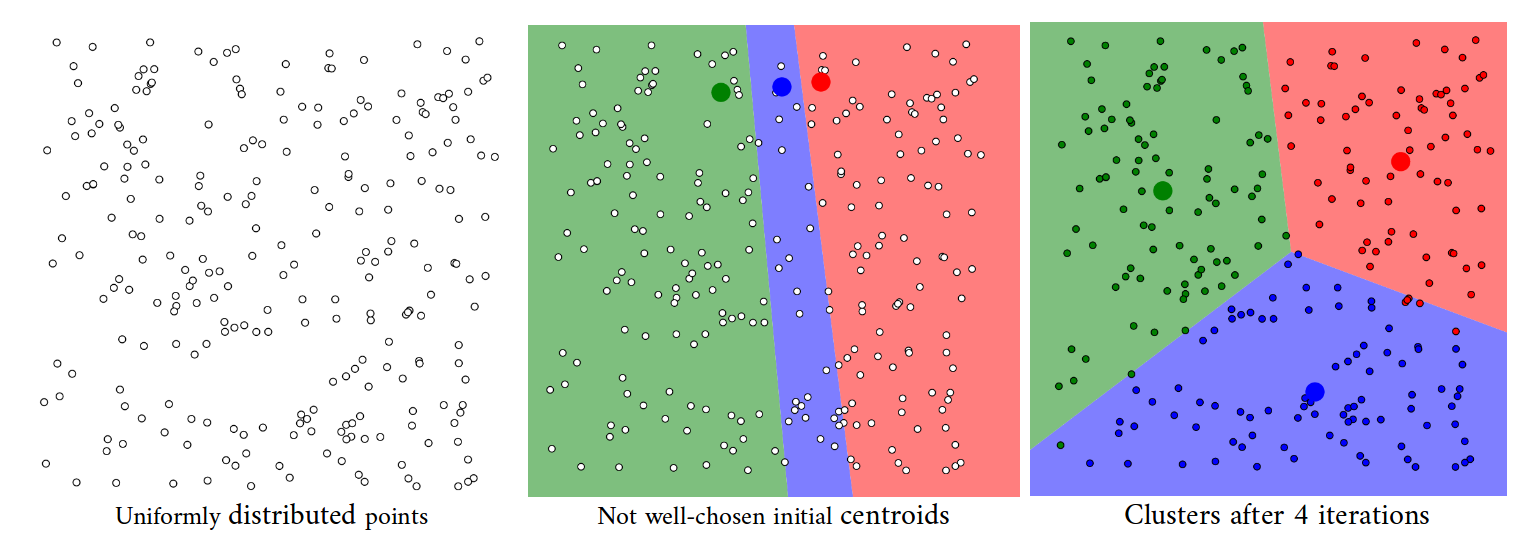A lecturer claimed in a recent class that "K-means assumes that each cluster includes a roughly equal number of observations."
However, when I searched online, there is conflicting information regarding this point.
The answer to this question claims that the "size" in K-Means refers to the area, not cardinality.
The answer to this question, however, explicitly claims that "size" in K-Means refers to "the amount of points in a cluster", not the "spread"!
This highly upvoted question also didn't help. The question included a statement that K-Means has the following assumption:
the prior probability for all k clusters is the same, i.e., each cluster has roughly equal number of observations
Unfortunately, the answers to that question didn't seem to directly address that "assumption" at all. So I still don't know if it's true or false.
Wikipedia says
k-means clustering and EM clustering on an artificial dataset ("mouse"). The tendency of k-means to produce equal-sized clusters leads to bad results, while EM benefits from the Gaussian distribution present in the data set
which further adds to the confusion.
The answers to the first two questions seem to directly contradict each other. So one of them must be false/inaccurate?
What exactly is K-Means' relationship with "equal number of observations in each cluster"? Is it an assumption? A tendency in the result? Or neither?



